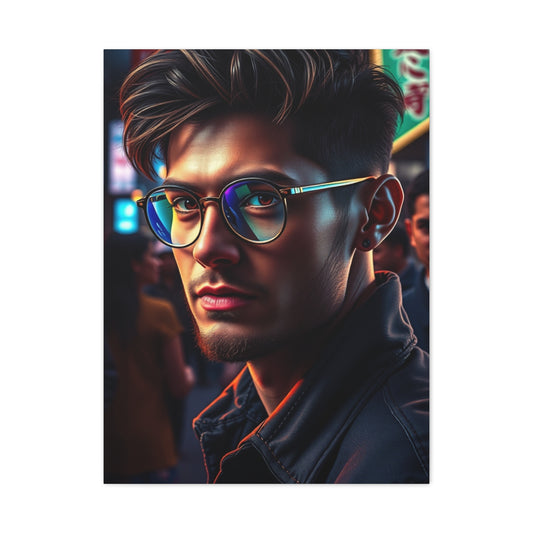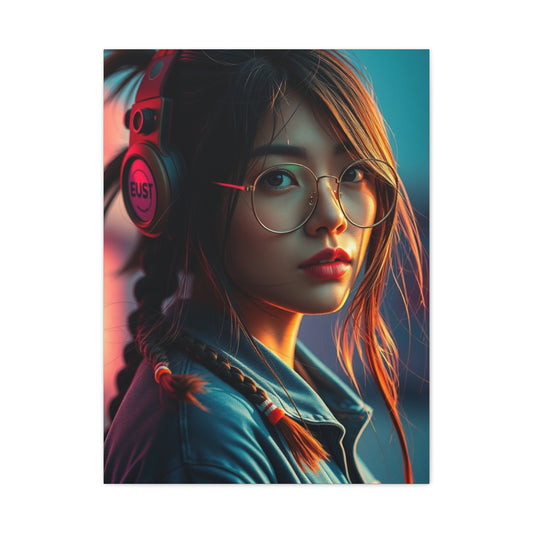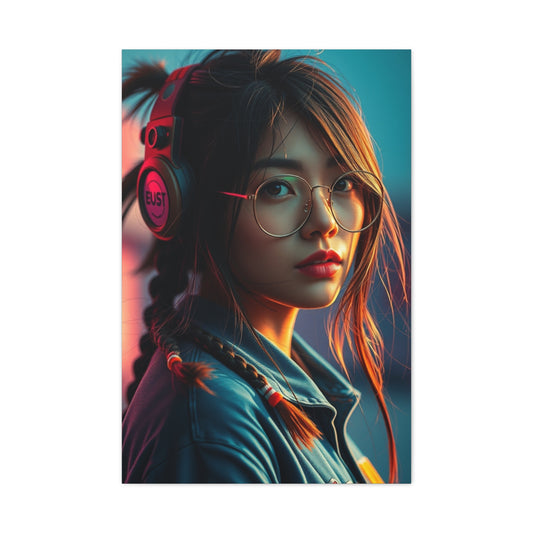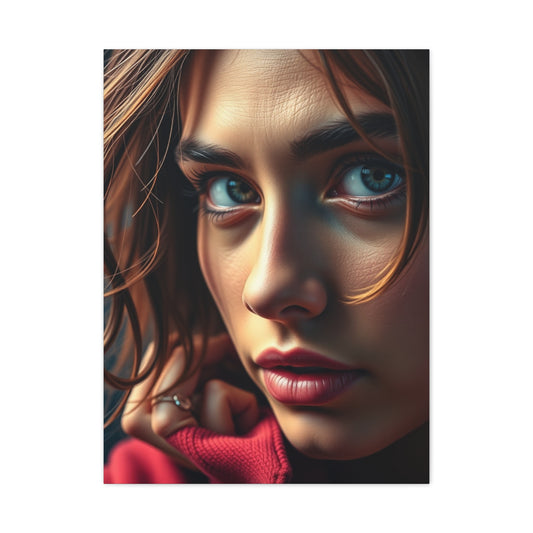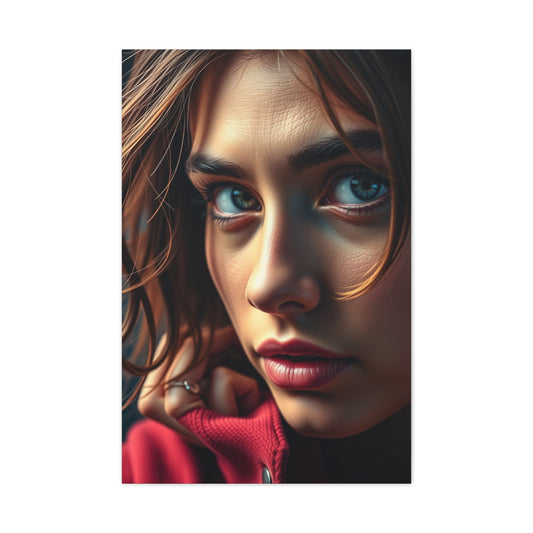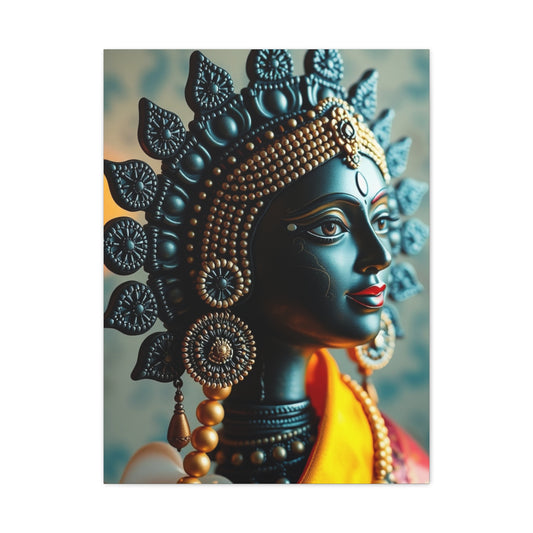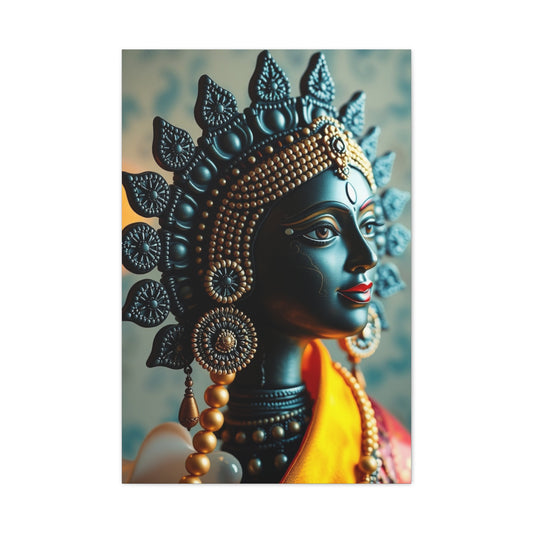Pongal, the celebrated harvest festival, holds a special place in the hearts of people across India. While it is predominantly observed in Tamil Nadu, its essence resonates in various forms throughout the country under different names such as Makar Sankranti in Maharashtra, Bihu in Assam, and Maghi in Punjab. At its core, Pongal is a festival of gratitude, an expression of appreciation toward the Sun, nature, and farm animals that play an integral role in providing a bountiful harvest. Homes are meticulously cleaned, adorned with fresh flowers, sugarcane, and oil lamps, reflecting both a spiritual and aesthetic preparation for the celebrations. Central to this vibrant festival is the creation of kolam, or Pongal rangoli designs, which transform ordinary spaces into symbolic expressions of prosperity, positivity, and cultural heritage.
Rangoli designs for Pongal are much more than decorative elements. They are intricate expressions of art that convey reverence for nature and the cycle of life. Traditionally, these patterns are made using rice flour, a practice that holds both aesthetic and symbolic significance. Rice is considered sacred in many communities, and using it to craft kolams signifies the nurturing bond between humans and the earth. The shapes, patterns, and motifs used in these designs often represent natural elements, such as plants, animals, flowers, and celestial bodies. Each design is not merely ornamental but carries layers of meaning, creating a harmonious blend of beauty, culture, and spirituality within homes.
While traditional kolams are celebrated for their complexity and precision, modern interpretations of Pongal rangoli designs embrace simplicity and creativity. The contemporary approach allows families with limited time or novice skills to still participate in this vibrant tradition. Easy-to-create patterns, minimalistic motifs, and fusion styles are gaining popularity, allowing the festival's charm to resonate across both traditional and modern homes. For instance, geometric patterns, floral arrangements, and thematic designs, such as kites or farm animals, provide a fresh perspective while retaining cultural significance. These adaptations make it possible for every household to showcase its creativity and join in the celebratory spirit without feeling constrained by intricate artistry.
A key aspect of creating Pongal rangoli is the placement and choice of design according to space. The pooja room is often the focal point of the home during the festival, making it an ideal location for a detailed rangoli. Traditional designs in this area are commonly inspired by Mattu Pongal, which celebrates cattle, acknowledging their contribution to agriculture. Rangoli motifs depicting cows, bulls, and other farm animals reflect gratitude toward these beings and add a traditional aura to the spiritual setting. Complementing these designs with modest lighting and floral arrangements can elevate the ambiance, infusing warmth and serenity into the pooja room.
Beyond the pooja room, rangoli can be extended to other areas such as the living room, entryway, and balcony to maintain a cohesive festive atmosphere. Modern homes are increasingly adopting wall-based rangoli designs, using stickers, paints, or decals to adorn vertical surfaces. This method is particularly convenient for those who wish to avoid extensive floor decor yet desire the visual impact of traditional kolam patterns. Using walls as a canvas allows for larger, more intricate motifs to be displayed, creating a captivating aesthetic that merges traditional artistry with contemporary design sensibilities. Such an approach also facilitates the celebration of Pongal in spaces where floor decorations may be impractical due to furniture or high foot traffic.
Kite-themed rangoli designs have emerged as a playful fusion of tradition and modernity. Inspired by the widespread kite-flying activities associated with harvest festivals, these designs introduce a sense of dynamism and fun to home decor. Brightly colored kites depicted in rangoli patterns can enliven the atmosphere, drawing attention and generating conversation among guests. The kite motif also symbolizes freedom, aspiration, and the joy of celebration, aligning perfectly with the spirit of Pongal. When combined with complementary decorative elements, such as hanging kites or string lights, this theme transforms a simple home into a festive haven, allowing for a blend of traditional symbolism and contemporary aesthetics.
Floral rangoli designs are another popular choice for enhancing the festive vibe. Flowers, with their vibrant colors and natural fragrance, inherently bring a sense of freshness and positivity to any space. Incorporating floral patterns in rangoli not only elevates visual appeal but also aligns with the celebratory essence of Pongal, which revolves around renewal, growth, and abundance. Simple dot-based floral patterns are particularly effective for entryways, creating a welcoming aura for visitors. Moreover, combining flowers such as marigolds, roses, or jasmine with traditional kolam patterns amplifies both the aesthetic and symbolic richness, connecting the household to the natural world in a harmonious celebration.
For urban dwellers with limited outdoor space, balconies and terraces offer unique opportunities for festive decoration. These areas can be transformed into cozy, artistic nooks with thoughtfully designed Pongal rangoli. Small, traditional designs on balcony floors, combined with earthy elements such as terracotta pots, hanging flowers, and oil lamps, can create an inviting environment for family gatherings. Additionally, using simple patterns like geometric shapes, circular motifs, or miniature kolams allows residents to celebrate Pongal without overwhelming small spaces. Balconies become extensions of home interiors, blending functionality with festive expression while maintaining a connection to nature.
In addition to conventional designs, minimalistic and sticker-based rangoli solutions provide practical alternatives for busy individuals. White rangoli stickers, for instance, replicate traditional kolam patterns with minimal effort while preserving the essence of the festival. These options are particularly beneficial for working professionals or those unfamiliar with drawing complex designs. By placing a pre-designed kolam sticker in front of the pooja room or main entrance, one can maintain a festive ambiance effortlessly. Pairing these minimalistic designs with simple floral decor and traditional lamps ensures the home retains its celebratory charm, combining efficiency with cultural authenticity.
A unique feature of Pongal rangoli is the opportunity to express regional and personal identity through design. While certain motifs like cows, sugarcane, and sun symbols are common, variations in patterns allow households to showcase their creativity. Traditional South Indian kolams often incorporate intricate dots and geometric lines, while other regions may favor bold shapes, bright colors, or floral arrangements. This diversity emphasizes the adaptability of Pongal rangoli designs, enabling families to celebrate the festival in ways that resonate with their personal and cultural preferences. It is this balance between tradition and individuality that makes rangoli an enduring and cherished art form.
Creating rangoli during Pongal is also a communal activity, fostering togetherness and participation. Families often gather to design kolams collaboratively, with children and elders contributing to the patterns. This collective effort strengthens bonds and reinforces cultural values, transforming the act of decoration into a meaningful ritual. The shared experience also encourages creativity, as different generations bring unique perspectives to the designs. Over time, these collaborative efforts result in the evolution of new motifs, reflecting the dynamic nature of festival traditions and allowing the art form to remain relevant across generations.
Finally, the integration of lighting and additional decorative elements enhances the visual impact of Pongal rangoli. Traditional oil lamps, fairy lights, and candles accentuate the designs, creating depth and highlighting intricate patterns. Similarly, placing flowers, sugarcane stalks, or festive figurines around the rangoli adds texture and vibrancy, turning simple patterns into immersive displays. These enhancements bridge the gap between traditional artistry and contemporary aesthetics, offering a holistic approach to festive decoration that appeals to modern sensibilities without losing the cultural essence of Pongal.
While traditional Pongal kolams remain timeless and cherished, modern adaptations have introduced a new dimension to festival decor. Today, rangoli is not limited to classical patterns; instead, it embraces fusion designs that blend tradition with contemporary aesthetics. This evolution reflects changing lifestyles and interior styles while ensuring the festival remains vibrant and relevant. Fusion designs often incorporate themes inspired by nature, geometric forms, or symbolic representations of harvest and prosperity. They allow households to experiment creatively, adding personality to their home interiors while celebrating Pongal in a way that resonates with their individual style.
One of the notable trends in modern rangoli is geometric fusion patterns. Unlike traditional kolams, which often rely on continuous line work and intricate dot patterns, geometric fusion designs play with symmetry, repetition, and contrasting shapes. Circles, triangles, and hexagons arranged in rhythmic patterns can create stunning visual effects that appear intricate yet are relatively easy to execute. These designs can be adapted to suit spaces of all sizes—from grand foyers to small verandas. The symmetry of geometric fusion not only adds sophistication to home decor but also symbolizes balance, harmony, and the cyclical nature of harvest, aligning beautifully with the essence of Pongal.
Another contemporary trend is the use of thematic rangoli motifs that narrate a story or represent specific elements of the harvest festival. Kite motifs, for instance, draw inspiration from the Makar Sankranti celebrations, where flying kites is a central activity. Rangoli designs featuring kites in flight can be colorful, playful, and dynamic, adding a sense of movement to otherwise static spaces. Similarly, motifs of sugarcane, sun, and farm animals can be stylized into modern, minimalistic designs. These motifs maintain cultural significance while allowing for creative flexibility. They can be rendered in single colors for a chic, modern look or in vibrant hues to capture the festival’s lively spirit.
Floral fusion rangoli designs are gaining immense popularity, as flowers naturally embody the vibrancy and positivity associated with Pongal. Instead of following strictly traditional patterns, modern floral designs often employ abstract or stylized arrangements of petals, leaves, and blooms. Circular floral patterns at entryways, linear trails along corridors, or scattered petals around lamps create a sense of freshness and vitality. Incorporating natural colors from turmeric, vermilion, and flower petals not only enhances the aesthetic but also ensures the designs remain environmentally friendly. Additionally, combining floral patterns with subtle geometric shapes results in a harmonious balance between organic and structured forms, making the decor contemporary yet culturally rooted.
For households with limited space, wall-based and vertical rangoli adaptations are an excellent choice. Walls, doors, and even partitions can be decorated with adhesive rangoli designs or painted motifs, bringing the festive charm indoors without requiring expansive floor areas. Vertical arrangements allow for bolder, larger designs that become focal points within the living space. Thematic vertical kolams can be enhanced with strings of marigold flowers, fairy lights, or small hanging decor items. For example, a wall near the pooja room can feature stylized motifs of the sun, cattle, and sugarcane intertwined with geometric patterns. This not only brightens up the space but also integrates traditional symbolism into modern interiors seamlessly.
Color plays a crucial role in modern rangoli design. While traditional kolams are often created using white rice flour, contemporary interpretations incorporate vivid powders, natural pigments, and even eco-friendly paints. The use of bold reds, oranges, greens, and yellows can elevate the visual impact and add vibrancy to the home. Color gradients and ombré effects are particularly appealing in modern designs, giving depth and dimension to rangoli patterns. Blending multiple colors can be used to highlight specific motifs, such as kites soaring above fields or flowers blooming in a circular design. Such innovations ensure that the decorative aspect of Pongal remains lively while still rooted in tradition.
The integration of lighting with rangoli has also evolved significantly. Traditional oil lamps placed around designs have been complemented with LED lights, fairy lights, and subtle spotlights. Illuminating the rangoli enhances its patterns, highlights colors, and creates a festive glow in the evening. For instance, placing a series of small lights along the edges of a geometric kolam pattern or around floral designs can create a mesmerizing effect that attracts attention and complements the festival’s warm and joyful ambiance. Layered lighting also allows for flexibility, transforming the mood of the space from daytime celebration to evening festivity effortlessly.
Another popular trend is interactive rangoli designs, where guests or family members can contribute small elements to a central motif. For example, a central circular pattern representing the sun can be surrounded by individual contributions such as miniature kites, flower petals, or symbolic designs created by different members of the family. This not only fosters togetherness but also introduces a collaborative and dynamic dimension to the festival’s decor. Over the years, interactive designs have become a meaningful way to combine artistry with family bonding, reflecting both creativity and cultural participation.
Modern rangoli also explores the combination of materials beyond traditional powders. While rice flour remains symbolic, other natural elements like colored sand, flower petals, pulses, and grains can be used to create texture and contrast. Sugarcane stalks, small clay lamps, and traditional figurines can be incorporated into the patterns for a three-dimensional effect. The combination of textures enhances the overall sensory experience, making the rangoli not just visually appealing but also tactile and aromatic. Such designs are particularly suitable for prominent areas of the home, such as the foyer or balcony, where they can be appreciated fully by family members and guests.
Sustainability is increasingly becoming a consideration in modern Pongal rangoli practices. Many households now prefer eco-friendly materials like natural dyes, powdered rice, flower petals, and grains instead of synthetic colors. This aligns with the festival’s underlying message of gratitude and respect for nature. Additionally, reusable rangoli stencils and designs made from biodegradable materials provide convenience without compromising the cultural and spiritual significance. Sustainability in rangoli design reflects an awareness of environmental impact while maintaining the authenticity of traditional practices, creating a balanced approach that honors both heritage and modern responsibility.
The concept of theme-based rangoli for different parts of the home has emerged as a creative approach to spatial decor. For the pooja room, designs often focus on symbolic motifs such as cattle, the sun, and harvest elements. Entryways typically feature welcoming floral or geometric designs to create an inviting first impression. Living rooms can incorporate abstract fusion designs, wall motifs, or circular rangoli patterns to enhance aesthetic appeal. Balconies and terraces are suited to playful or seasonal designs like kites or sun motifs, connecting indoor spaces with the outdoors. By designing specific themes for different areas, homeowners can create a cohesive narrative that reflects the festival’s spirit while catering to practical spatial considerations.
Seasonal motifs have become another exciting dimension of modern Pongal decor. In addition to the customary harvest symbols, motifs inspired by the sky, clouds, and wind have been incorporated, especially in kite-themed designs. Similarly, motifs representing seasonal flora, such as marigolds and jasmine, integrate both visual beauty and symbolic meaning, as these flowers are often harvested during this period. These motifs highlight the connection between nature and human celebration, reinforcing Pongal’s essence as a harvest festival that honors both the earth and the cycle of life.
Minimalistic designs have also carved a niche in contemporary rangoli. Not every household prefers intricate or highly detailed patterns; simple, elegant designs are perfect for those seeking subtle yet meaningful decoration. Minimalistic patterns often use white rice flour or a single-color palette to outline basic geometric shapes or central motifs. Despite their simplicity, these designs convey sophistication and cultural reverence. They are particularly suitable for urban homes with limited space or busy schedules, allowing individuals to celebrate Pongal without spending hours on intricate decor while maintaining authenticity.
Technology and modern crafting techniques have influenced rangoli design as well. Pre-made rangoli stencils, adhesive designs, and even digital templates allow for precision and ease of execution. These innovations are particularly useful for large or intricate patterns that would otherwise require advanced skills or extended time. Stencils can help maintain symmetry, achieve consistent shapes, and experiment with complex designs without frustration. By blending technology with traditional art, modern rangoli enthusiasts can explore creative possibilities while honoring the festival’s cultural roots.
Collaborative and themed rangoli competitions in communities have also shaped contemporary trends. Observing diverse interpretations of traditional designs inspires individuals to innovate in their own homes. Themes such as “sun and harvest,” “celebration of nature,” or “kites in motion” encourage creativity and promote cultural education, especially for younger generations. Community interaction enriches the festival experience, fostering a sense of unity while showcasing the evolving art form. Families can draw inspiration from these collective efforts to craft designs that are both unique and meaningful, reflecting personal style and festive spirit simultaneously.
Finally, integrating additional decorative elements with rangoli ensures a holistic aesthetic experience. Small oil lamps, flower garlands, hanging kites, and handcrafted decor pieces complement the patterns, creating layers of visual interest. Careful placement of these elements enhances the narrative conveyed by the rangoli, whether celebrating gratitude, prosperity, or seasonal change. By combining traditional motifs, contemporary techniques, thematic storytelling, and auxiliary decorations, modern Pongal rangoli achieves a harmonious balance of beauty, symbolism, and cultural significance.
The creation of Pongal rangoli is as much about strategy and space planning as it is about artistry. While designs can be visually stunning, their effectiveness largely depends on thoughtful implementation tailored to the size and layout of the home. Adapting rangoli to different spaces—whether compact urban apartments, expansive living areas, or open terraces—ensures the festival’s vibrant spirit is celebrated fully without overwhelming the space. Practical considerations such as pattern scale, material choice, and layout planning are essential to crafting rangoli that is both aesthetically appealing and functional.
One of the first considerations is selecting the appropriate location for the rangoli. The main entrance or foyer is traditionally the most prominent spot, setting the tone for the festival. Here, rangoli serves as a welcoming element, reflecting the household’s warmth and festive spirit. Depending on the available space, one can create either a large, intricate design that occupies the entire entryway or a smaller, compact motif that leaves room for foot traffic. Symmetry and balance in these patterns are crucial, as they enhance visual appeal while maintaining harmony with the surrounding decor. Pairing the design with floral garlands or oil lamps along the edges further accentuates its presence.
For living rooms and common areas, rangoli can be adapted to complement furniture placement and overall interior design. Large, open areas allow for elaborate geometric or thematic patterns, while smaller living spaces benefit from compact designs or corner motifs. In modern homes, circular or mandala-style patterns are particularly effective, as they create a natural focal point without requiring floor-wide coverage. These designs can be enhanced with soft lighting or decorative items like small clay figurines, ensuring that the rangoli integrates seamlessly into the overall festive decor.
Balconies and terraces present unique opportunities for outdoor-inspired rangoli designs. These areas often benefit from creative freedom in color and size, as the floor can withstand more experimental patterns without the risk of interfering with daily indoor activities. Kite-themed rangoli is particularly popular in terraces, where the motif aligns with traditional harvest festival activities like kite flying. Additionally, incorporating potted plants or small flowering shrubs around the design enhances the natural vibe, creating an immersive outdoor festive setting. Using eco-friendly materials like powdered rice, flower petals, or colored sand ensures that outdoor designs remain both visually appealing and environmentally conscious.
Another practical aspect is the scale of the design in relation to the space. Oversized patterns in a small area can feel cluttered, while small motifs in a large hall may appear underwhelming. Measuring the area beforehand and sketching preliminary outlines can help maintain proportion and ensure the design complements the surrounding decor. Simple tools such as chalk, string guides, or stencil outlines can assist in achieving accurate symmetry and spacing. By planning, the rangoli can appear effortless, even when complex patterns are executed, ensuring that the home exudes elegance and festivity simultaneously.
Material selection is another key factor in practical rangoli implementation. While traditional rice flour remains symbolic, modern variations include colored powders, natural pigments, flower petals, grains, and even fine sand. Each material brings unique properties: powders provide smooth, vibrant surfaces; flower petals offer texture and fragrance; grains and pulses create dimension and tactile interest. Selecting materials appropriate to the environment—indoors or outdoors—ensures durability and prevents accidental smudging. For instance, fine powders are ideal for indoor floors where foot traffic is minimal, while flower petals and grains are better suited for outdoor spaces where durability is less critical.
Lighting is another essential element for enhancing the impact of rangoli. Strategic placement of oil lamps, candles, or LED lights around the design can create depth and highlight intricate details. For instance, circular mandala patterns are beautifully accentuated with concentric arrangements of lamps, producing a radiant glow that draws attention. Similarly, string lights or fairy lights can be draped over surrounding furniture or plants to complement outdoor or balcony designs. Proper illumination not only showcases the artistry but also enhances the overall festive atmosphere, creating a warm and inviting ambiance for family gatherings and celebrations.
For urban dwellers with constrained spaces, compact and modular rangoli designs provide practical solutions. Miniature motifs, pre-designed stencils, and sticker-based designs allow for festive decoration without occupying large floor areas. These options are particularly useful for apartments with minimal entrance space or for homes with high foot traffic. Modular designs can also be combined in patterns or repeated across the floor to create a cohesive look, offering flexibility in arrangement. Even within a limited area, such designs maintain the essence of the traditional Pongal celebration while accommodating modern living constraints.
Incorporating seasonal elements into rangoli adds authenticity and freshness. Seasonal flowers, leaves, and harvest symbols like sugarcane, paddy grains, and turmeric roots can be integrated into the design to evoke a sense of connection with the natural cycle. These elements also reinforce the symbolic meaning of Pongal as a harvest festival, celebrating gratitude toward nature’s abundance. For instance, creating a floral border around a geometric central motif combines seasonal vibrancy with structural balance, enhancing both visual appeal and cultural resonance. Seasonal integration ensures that the rangoli remains meaningful and contextually relevant while retaining aesthetic charm.
The choice of colors is another practical consideration. Traditional kolams are predominantly white, but modern designs incorporate bright, vibrant hues such as orange, red, yellow, green, and blue. Using contrasting colors helps differentiate motifs, making them visually distinct and easier to appreciate from a distance. Gradients or blended tones can add depth and dimension, particularly in floral or abstract patterns. For monochromatic designs, emphasizing texture and layering can compensate for the absence of multiple colors, ensuring that the design remains visually engaging. Selecting the right color palette is crucial to maintaining harmony with existing home interiors while enhancing the festive ambiance.
Designs can also be customized according to household dynamics. Families with children may prefer playful and interactive motifs, such as animals, kites, or sun patterns, which allow them to participate in creating the rangoli. Adults might focus on more intricate or abstract designs that require precision and attention to detail. This personalization ensures that the rangoli reflects both the household’s aesthetic sensibilities and their involvement in the festival. Collaborative creation of rangoli can also strengthen family bonds, offering an opportunity to pass on cultural knowledge and traditions to younger generations in a hands-on manner.
Another aspect of practical adaptation is maintenance and durability. Rangoli designs, especially those created with powders or flower petals, can be prone to smudging due to foot traffic or air currents. To prevent this, small boundaries using chalk or string outlines can be established around the design, guiding movement and reducing accidental disturbances. For outdoor or semi-open spaces, using heavier materials like rice grains, pulses, or sand can improve stability. Additionally, creating rangoli closer to walls, corners, or furniture edges provides natural protection while still displaying the design prominently.
The integration of decorative accents alongside the rangoli enhances its visual and symbolic impact. Small clay lamps, diyas, or tea-light candles placed at strategic points emphasize symmetry and draw attention to central motifs. Hanging flowers, garlands, and traditional festive ornaments complement the patterns while adding layers of texture and fragrance. Even minimalistic accents like a single flower arrangement or a small symbolic figurine can elevate the aesthetic, making the design feel complete and thoughtfully curated. These accents bridge the gap between traditional artistry and practical home decoration, ensuring that each space reflects both creativity and cultural heritage.
Spatial adaptation also extends to vertical and wall-mounted rangoli. For homes where floor space is limited, walls, doors, and partitions can become canvases for artistic expression. Wall-based designs can mirror floor patterns or feature complementary motifs, creating continuity across the home. Stick-on designs, painted motifs, or lightweight stencils allow for precision without occupying walking space, and they can be easily removed or updated for future celebrations. Vertical adaptations also provide a unique perspective, allowing for bold, large-scale designs that transform ordinary walls into festive highlights.
A significant benefit of careful spatial planning is the ability to create thematic coherence across the home. By aligning rangoli designs with other decor elements—such as curtains, cushions, wall colors, and lighting—households can achieve a harmonious festive environment. For instance, a foyer with a floral rangoli may be complemented by floral garlands on the staircase railing or bright cushions in the living room that echo the rangoli’s colors. A kite-themed terrace design can be paired with hanging kites and colorful lanterns, unifying indoor and outdoor celebrations. Such thematic alignment enhances the overall festive experience, making every area of the home feel intentional and thoughtfully curated.
Finally, attention to timing and preparation ensures the best results. Rangoli designs are most effective when freshly created, as colors are vivid, materials are intact, and lighting highlights the patterns optimally. Preparing materials in advance, sketching outlines, and organizing decorative accents allow for smooth execution, reducing stress and ensuring that the home is ready for celebrations. For households with multiple family members participating, assigning roles or sections of the design can streamline the process and encourage collective creativity. By balancing planning, design, and execution, Pongal rangoli becomes an enjoyable and rewarding practice rather than a hurried chore.
Pongal is a festival deeply rooted in nature, the harvest, and the cycles of the seasons, and this connection provides endless inspiration for rangoli designs. Seasonal motifs, color schemes, and decorative elements reflect the festival’s emphasis on gratitude, abundance, and renewal. Incorporating these elements into rangoli not only enhances aesthetic appeal but also ensures that the design resonates with the spirit of Pongal. Seasonal inspiration encourages creativity while honoring the traditional symbolism associated with harvest, prosperity, and the natural world.
One of the most prominent seasonal inspirations for Pongal rangoli is the sun, representing energy, life, and abundance. Sun motifs can be incorporated into central designs, particularly in circular or mandala-style rangoli, symbolizing the source of all agricultural growth. Radiating patterns, often enhanced with bright yellows, oranges, and golds, emulate sunlight spreading across the fields. These designs serve as a visual reminder of the festival’s purpose: acknowledging and celebrating the life-sustaining power of nature. Pairing sun motifs with traditional harvest symbols like sugarcane, grains, and farm animals further strengthens this seasonal connection, creating a holistic representation of the festival’s ethos.
Floral motifs are another key source of seasonal inspiration. The harvest period coincides with the blooming of specific flowers, such as marigolds and jasmine, which are traditionally used in festival decorations. Incorporating these blooms into rangoli adds vibrancy, fragrance, and texture, while simultaneously maintaining cultural authenticity. Modern floral designs often combine stylized petals, circular arrangements, or abstract patterns, allowing homeowners to balance simplicity with visual impact. Seasonal flowers can also serve as complementary accents to geometric or thematic motifs, creating layered compositions that reflect both natural beauty and artistic expression.
The harvest itself inspires textures and materials in rangoli design. Grains, pulses, and rice are integral to Pongal celebrations, symbolizing sustenance and prosperity. Using these natural materials in rangoli designs not only pays homage to the harvest but also introduces tactile interest and depth. For example, arranging rice grains or pulses in concentric circles or outlining motifs can create a subtle contrast with powdered colors or flower petals. This combination of textures enhances the sensory experience, making the rangoli visually striking and symbolically meaningful, while reinforcing the festival’s central theme of abundance.
For modern homes, integrating rangoli into interior design themes requires consideration of color harmony, scale, and spatial flow. Neutral or minimalistic interiors benefit from rangoli designs with bold, vibrant colors that introduce contrast and draw attention. Bright hues like reds, oranges, and greens can create focal points in living rooms, foyers, or terraces, elevating the festive ambiance without overwhelming the existing decor. In contrast, homes with already colorful or patterned interiors can opt for monochromatic or pastel rangoli designs, emphasizing form and structure over color. By aligning rangoli patterns with interior design sensibilities, homeowners achieve a balanced and harmonious festive environment.
Rangoli can also be adapted for various home spaces beyond traditional floors. Vertical surfaces, staircases, and partitions offer creative opportunities to expand the decorative scope. Wall-based designs, painted motifs, or adhesive patterns can mirror floor designs, creating visual continuity and cohesion throughout the home. Staircase motifs, either along risers or landings, provide subtle yet impactful festive touches, guiding visitors’ eyes upward while integrating seamlessly with interior architecture. Even small urban apartments can embrace these adaptations, using compact vertical patterns to convey the festival spirit without occupying valuable floor space.
Modern design trends encourage experimentation with themes that blend tradition and contemporary aesthetics. Fusion motifs, such as kite patterns interwoven with geometric shapes or floral arrangements framed within circular outlines, combine familiar symbolism with modern artistic expression. These thematic variations allow households to celebrate Pongal in innovative ways while preserving cultural significance. Kite motifs, in particular, evoke a sense of movement and playfulness, reflecting traditional harvest festival activities while providing a fresh visual perspective. Pairing thematic motifs with subtle lighting or complementary decor items enhances the immersive experience, bridging the gap between contemporary design and traditional celebration.
Lighting continues to play a crucial role in modern rangoli displays. Beyond traditional oil lamps, homeowners increasingly use LED lights, fairy lights, and miniature spotlights to enhance visual appeal. Illuminating key motifs such as sun symbols, central floral patterns, or thematic elements like kites highlights design intricacies and creates a festive ambiance. Layered lighting, with subtle background illumination and focused accent lights, brings depth and dimension to the rangoli, transforming simple floor patterns into captivating focal points. Strategic placement of lights can also guide movement through the home, drawing attention to central designs and complementing other decorative elements.
Balconies and terraces can be particularly effective spaces for creative and seasonal rangoli interpretations. Open-air areas provide opportunities for larger-scale designs, allowing patterns to be viewed from multiple angles. Seasonal motifs, such as blooming flowers, harvest symbols, or sun-inspired designs, integrate naturally with outdoor lighting and greenery. Incorporating eco-friendly elements, such as terracotta lamps, potted plants, or flower garlands, strengthens the connection to nature and creates a holistic celebration space. Even small terraces can benefit from modular or compact designs, arranged to maximize visual impact without overcrowding the space.
Color gradients and blending techniques are increasingly popular in modern rangoli, offering sophisticated visual effects. Gradients can simulate sunlight, field patterns, or abstract transitions, enhancing the sense of depth in the design. Blending multiple colors within floral or geometric motifs introduces subtle dynamism, making the patterns appear more lively and textured. Gradient effects are particularly effective for central motifs or focal points, drawing the viewer’s eye inward and creating a sense of movement within the rangoli. Combining gradient techniques with contrasting accents, such as gold or white outlines, ensures that modern designs retain clarity and structure.
Sustainability remains a significant consideration in contemporary rangoli practice. Using natural materials like rice flour, pulses, dried flowers, and eco-friendly pigments reduces environmental impact while maintaining authenticity. These materials are biodegradable and non-toxic, aligning with the festival’s ethos of gratitude toward nature. Additionally, pre-made stencils, reusable templates, and biodegradable decorative items provide convenience without compromising cultural integrity. Sustainable choices reflect mindfulness in celebration, demonstrating how traditional practices can adapt responsibly to modern environmental concerns.
Interactive and collaborative rangoli designs are another exciting evolution in modern practice. Family members, children, and guests can participate by contributing individual elements or motifs within a larger composition. This approach not only enhances creativity but also strengthens bonds and fosters a sense of shared celebration. For instance, a central motif representing the sun or harvest can be surrounded by small, personalized designs contributed by different household members. Collaborative rangoli transforms the decoration process into a meaningful activity, where artistic expression and cultural education coexist.
Minimalistic approaches continue to thrive alongside elaborate designs, particularly in urban settings. White rice flour motifs, simple geometric outlines, or small thematic symbols offer subtle yet impactful decorative options. Minimalistic rangoli emphasizes form, balance, and placement rather than color complexity, making it suitable for compact spaces, busy schedules, or contemporary interiors. Even within minimalism, seasonal inspiration can be integrated through subtle accents, such as a single flower or a grain-based border. This approach allows the essence of Pongal to shine through without requiring extensive time or resources.
Rangoli can also be designed to complement other festive decor elements. Combining patterns with decorative items like diyas, oil lamps, flower garlands, or thematic ornaments enhances visual appeal and emphasizes symbolic meaning. For example, placing a row of lamps around a geometric central motif amplifies both illumination and focus, while hanging flower garlands around the perimeter integrates the design with surrounding decor. By thoughtfully combining rangoli with other elements, households create cohesive, immersive festive environments that are visually stunning and culturally resonant.
The integration of modern crafting techniques has further expanded creative possibilities. Pre-designed stencils, adhesive patterns, and digital templates allow for precision, symmetry, and consistency, particularly for intricate or large-scale designs. These tools are useful for households seeking professional-looking results without extensive experience or time investment. Using stencils or templates does not diminish the cultural or aesthetic value; rather, it democratizes the art form, making it accessible to a broader audience while preserving the festival’s traditional significance.
For homes with multiple levels, multi-layered rangoli designs offer unique opportunities for visual storytelling. Central motifs on the ground floor can be complemented by smaller, thematic designs on staircases, landings, or upper-level terraces. This layered approach creates a sense of narrative, guiding viewers through the home and creating continuity in festive decor. Themes can vary by level—such as a central harvest motif on the main floor, kite motifs on the terrace, and floral patterns on staircases—providing diversity while maintaining cohesion. Layered designs enhance the festival experience, ensuring that every corner of the home reflects celebration and attention to detail.
Cultural symbolism remains central even in modern adaptations. Motifs such as cows, sugarcane, grains, and the sun are not merely decorative; they convey gratitude toward nature, prosperity, and spiritual well-being. Integrating these symbols with contemporary techniques—such as gradient coloring, geometric framing, or interactive elements—ensures that designs retain their traditional significance while remaining relevant in today’s homes. Thoughtful representation of these symbols strengthens the festival’s cultural depth, fostering awareness of heritage and reinforcing values across generations.
In addition, thematic variations allow households to personalize their festive celebration. For example, young families may prefer playful and colorful motifs such as kites, butterflies, or farm animals, while older generations may favor more traditional designs rooted in symbolism and geometry. Customizing motifs according to household preferences ensures that the rangoli reflects both personal taste and collective values, making the celebration meaningful and inclusive. Such personalization demonstrates that the art of rangoli is not static but adaptable, accommodating creativity, expression, and cultural continuity.
Finally, attention to detail in finishing touches ensures that the rangoli is both visually captivating and harmonious with its surroundings. Small adjustments, such as emphasizing outlines, balancing symmetry, or refining color transitions, enhance the overall design. Complementary elements such as flower petals, grains, or miniature lamps can be added strategically to draw focus, highlight motifs, and create depth. These finishing touches transform even simple patterns into intricate, engaging displays, allowing the home to radiate the festive spirit fully.
Pongal rangoli is more than an ornamental tradition; it embodies artistry, cultural symbolism, and the spirit of seasonal celebration. While traditional kolams offer timeless charm, modern interpretations provide opportunities for advanced creative experimentation. Homeowners are increasingly exploring innovative variations, thematic designs, and functional aesthetics, integrating rangoli into contemporary living spaces without compromising cultural significance. These developments allow the festival to be celebrated with freshness and imagination, while preserving its core values of gratitude, prosperity, and connection to nature.
A significant trend in modern rangoli is layered design composition. Layering involves creating multiple levels of design within a single rangoli, enhancing depth and visual interest. For instance, a central motif such as the sun, harvest baskets, or farm animals can serve as the focal point, surrounded by concentric patterns of floral arrangements, geometric shapes, or seasonal symbols. Each layer can vary in color, texture, and materials, creating a multi-dimensional effect. This approach is especially effective in large open spaces like living rooms, courtyards, or terraces, where the design can be appreciated from multiple angles. Layering transforms the rangoli from a static pattern into a dynamic centerpiece, capturing attention and celebrating the festival with vibrancy.
Thematic experimentation is another hallmark of contemporary Pongal rangoli. While traditional motifs remain popular, modern homes are embracing abstract interpretations, fusion designs, and symbolic storytelling through patterns. Kite-themed rangoli, for example, combines geometric precision with playful movement, evoking the joy of seasonal kite flying. Similarly, farm-inspired motifs such as cows, sugarcane, sun, and paddy grains can be stylized to create modern silhouettes that blend seamlessly with minimalistic or contemporary interiors. Thematic rangoli allows homeowners to tailor designs to their personal aesthetics while retaining the festival’s essence, creating an engaging balance between tradition and innovation.
Incorporating seasonal natural elements into rangoli is a particularly effective way to maintain authenticity while enhancing visual appeal. Flower petals, dried leaves, fresh grains, and pulses can be used to complement traditional powdered patterns. Marigold petals, turmeric-infused powders, and colorful grains not only add texture and fragrance but also reinforce the harvest theme central to Pongal. Flower trails around geometric or mandala patterns can frame the design beautifully, while scattered petals or grains within motifs create depth and contrast. Seasonal integration ensures that rangoli designs remain culturally resonant while providing a multi-sensory experience for household members and guests.
For urban homes or spaces with limited floor area, vertical and wall-mounted rangoli provide an innovative solution. Doors, walls, and partitions can serve as canvases for adhesive or painted motifs, extending festive decoration beyond traditional floor-based designs. Vertical arrangements also allow for bold, large-scale designs that can be viewed from different perspectives, transforming ordinary walls into vibrant expressions of cultural heritage. Small urban apartments can benefit from modular, compact, or tiered wall patterns, ensuring that the festival’s vibrancy is visible even in constrained spaces. Complementary lighting, such as fairy lights or LED spotlights, can enhance these vertical displays, emphasizing key motifs and creating a festive atmosphere.
Material experimentation has also expanded the creative possibilities of rangoli. While rice flour remains traditional and symbolic, contemporary designs incorporate colored powders, natural pigments, pulses, sand, and flower petals. Combining these materials introduces texture, contrast, and sensory richness. For example, a central motif may be rendered in bright powders, surrounded by a layer of grains or seeds, and accented with flower petals for vibrancy. Such combinations offer a tactile dimension to the design, engaging viewers’ senses beyond visual aesthetics. Layered materials also increase durability for outdoor or high-traffic areas, ensuring the rangoli remains intact throughout the festival celebrations.
Color gradients and blending techniques have gained popularity in advanced designs. Smooth transitions between colors can simulate natural elements such as sunlight, fields, or seasonal flowers, enhancing depth and visual interest. Gradients are particularly effective in large mandala-style patterns or circular motifs, creating a sense of movement and dynamism. Blending techniques can also be applied to thematic motifs, such as transitioning colors in kite tails or sun rays, adding vibrancy and realism. Careful contrast, layering, and outlining ensure that even complex designs retain clarity and elegance, highlighting the skill and creativity involved in modern rangoli.
Lighting plays an increasingly important role in functional aesthetics. Beyond traditional oil lamps, modern rangoli often incorporates layered illumination, where ambient lighting, fairy lights, and spotlights interact with the design. For instance, concentric lamps around a central motif can create radiant highlights, emphasizing focal points and enhancing visual impact. LED strips or small spotlights along geometric patterns can accentuate depth and detail, particularly in vertical or outdoor arrangements. Thoughtful lighting transforms rangoli from static decoration into an immersive visual experience, drawing attention to intricate details and creating a festive ambiance that resonates throughout the home.
The concept of interactive rangoli is gaining traction among households seeking a collaborative celebration. Families, children, and guests can participate in completing motifs, adding small elements, or filling color sections. Central motifs such as the sun, harvest baskets, or floral patterns can serve as the focal point, while surrounding layers are personalized contributions. This participatory approach fosters creativity, strengthens family bonds, and encourages cultural education through hands-on involvement. Interactive rangoli turns decoration into an engaging activity rather than a solitary task, reinforcing the communal spirit central to Pongal celebrations.
Spatial adaptation remains a crucial aspect of modern rangoli design. Homes vary in size, layout, and flooring, which influences pattern scale, materials, and placement. Large open spaces allow for elaborate, detailed compositions with multiple motifs and layers. Smaller areas benefit from simplified designs, modular motifs, or minimalistic interpretations. Balconies and terraces can host larger thematic displays, such as kite motifs, floral trails, or geometric arrangements, while indoor living rooms and entryways are suitable for central mandalas or small symbolic motifs. Proper spatial planning ensures that rangoli complements the home’s architecture, enhances visual harmony, and remains practical for daily use during the festival.
Another significant trend is integration with complementary decor elements. Rangoli designs are often accompanied by decorative accents such as diyas, oil lamps, flower garlands, and small figurines. These elements enhance visual interest, highlight motifs, and emphasize the symbolic meaning of the design. For example, placing a row of lamps around a geometric central motif accentuates symmetry and draws attention to the pattern, while flower garlands along boundaries create layered textures and seasonal resonance. Thoughtful integration of auxiliary decor transforms rangoli into a cohesive centerpiece that ties together multiple aspects of festive home decoration.
Modern households increasingly experiment with fusion motifs, combining traditional symbols with contemporary geometric, abstract, or artistic patterns. For instance, traditional motifs like sugarcane, cattle, and sun can be stylized with minimalistic lines or abstract forms, creating a fresh visual language that aligns with modern interiors. Fusion motifs allow for creative freedom, enabling homeowners to experiment with form, color, and composition without compromising cultural relevance. By blending the old and new, fusion rangoli becomes a versatile medium, suitable for both large-scale celebration areas and compact, modern living spaces.
Eco-friendly practices remain central to advanced rangoli creation. Using biodegradable powders, natural pigments, flower petals, and grains not only respects environmental values but also reinforces the festival’s ethos of gratitude toward nature. Reusable stencils and templates further reduce waste, offering convenience without sacrificing creativity or cultural significance. Sustainable practices ensure that rangoli decorations remain meaningful and responsible, aligning traditional art forms with modern environmental consciousness. This approach resonates particularly with urban households, where practicality and sustainability are increasingly important considerations.
Color harmony is also essential in advanced designs. Thoughtful selection of complementary colors enhances visual impact, creates balance, and highlights motifs. Bright, contrasting hues can emphasize central themes or seasonal elements, while monochromatic or analogous palettes suit minimalistic interiors, creating understated elegance. Seasonal inspiration, such as warm yellows and oranges for sunlight, greens for harvest, and vibrant floral tones, can guide color choices and unify motifs across multiple spaces. Harmonious color integration ensures that the rangoli feels cohesive and visually pleasing, enhancing the overall festive atmosphere.
Advanced rangoli also incorporates multi-sensory elements to enrich the experience. Scented flowers, aromatic powders, and textured grains add dimension beyond visual appeal, engaging additional senses and creating an immersive festive environment. Interactive designs can incorporate touch, encouraging family members to participate and contribute personal elements. Multi-sensory integration strengthens cultural resonance, reinforces seasonal significance, and transforms rangoli into a holistic celebration medium that engages household members and visitors alike.
Personalization and storytelling through rangoli motifs add depth to modern designs. Each element can convey meaning, such as gratitude for the harvest, celebration of nature, or familial togetherness. Symbolic motifs, color choices, and interactive contributions create a narrative that reflects the household’s values, preferences, and festive spirit. By combining tradition with personal expression, rangoli becomes both a decorative feature and a medium of cultural storytelling, enriching the festival experience and creating meaningful memories.
Finally, attention to finishing touches and refinement elevates advanced rangoli to a professional-level aesthetic. Small adjustments in symmetry, color intensity, layering, and material placement ensure visual cohesion and clarity. Accent elements like flower petals, grains, or miniature lamps highlight focal points and add depth. Thoughtful refinement ensures that even complex designs appear elegant and balanced, transforming ordinary floors or walls into stunning celebratory canvases. The meticulous attention invested in final touches underscores the festival’s significance, reflecting care, creativity, and cultural reverence.
In modern interior design, wallpapers have evolved far beyond mere wall coverings. They are now essential tools for shaping the ambiance, functionality, and character of a home. Both PVC and polygranite wallpapers offer unique advantages that cater to diverse design priorities, from budget-conscious solutions to luxurious, long-lasting aesthetics. By the final stage of understanding these materials, homeowners can make informed, strategic choices that combine practicality, style, and durability.
Maximizing Visual Impact Through Strategic Placement
Placement is a critical factor in wallpaper effectiveness. Walls differ in exposure, usage, and visual prominence, and selecting the right material for the right location ensures both beauty and functionality. PVC wallpapers are ideal for areas that require flexibility, moisture resistance, or frequent updates. Kitchens, bathrooms, children’s rooms, and secondary living spaces benefit from PVC’s vibrant colors, patterns, and textures, combined with ease of maintenance.
Polygranite wallpapers, with their stone-like finishes, are perfect for walls that serve as design anchors. Primary living rooms, dining areas, hallways, and feature walls are well-suited for polygranite due to its luxurious texture, durability, and timeless appeal. When placed thoughtfully, polygranite walls become focal points, complementing furniture, lighting, and other decorative elements to create an elegant, cohesive environment.
Complementing Furniture and Décor
Wallpaper works best when integrated with furniture and decorative elements. PVC wallpapers provide an opportunity to experiment with bolder patterns, contrasting colors, or modern textures. For example, a bright, geometric PVC wall can energize a minimalist living room, while soft, neutral textures create calm in bedrooms. Pairing PVC wallpapers with complementary furniture colors, metallic accents, or statement lighting can further elevate the overall design.
Polygranite wallpapers, by contrast, offer a neutral yet luxurious foundation for a room. Their natural stone textures complement high-quality furniture, polished wood, metals, and plush textiles. In living rooms or formal dining areas, polygranite walls can anchor sophisticated furniture arrangements, allowing other design elements—like decorative artwork, rugs, or accent lighting—to shine. By balancing bold PVC choices with refined polygranite textures, homeowners can achieve interiors that are both dynamic and harmonious.
Room-by-Room Recommendations
Understanding the functional requirements of each room helps in selecting the right wallpaper material:
-
Living Rooms: A combination approach often works best. Polygranite on a primary wall adds sophistication, while PVC can be used on side walls for color, pattern, or seasonal updates. This approach balances permanence and adaptability.
-
Bedrooms: For restful spaces, polygranite behind the bed creates a calming, luxurious feel. PVC can complement this with subtle textures on adjacent walls or wardrobe panels. Children’s bedrooms benefit more from PVC due to ease of cleaning and the ability to change designs as they grow.
-
Kitchens: PVC is the preferred choice due to its moisture resistance, easy maintenance, and variety of finishes. Polygranite can be used selectively as a backsplash or accent for a premium touch without the need for extensive coverage.
-
Bathrooms: Moisture-prone environments favor PVC, which resists mold, mildew, and water damage. For added sophistication, polygranite may be used in dry zones or as decorative panels to introduce elegance.
-
Hallways and Entryways: High-traffic areas benefit from polygranite’s durability, ensuring long-term aesthetic quality. PVC can be applied to secondary areas or lower walls to allow creative expression without compromising resilience.
Color and Texture Integration
Color and texture are vital in influencing mood, perception of space, and visual appeal. PVC wallpapers offer flexibility in color palettes, allowing for bright accents, bold contrasts, or muted tones depending on design intent. Light hues expand small rooms, while dark shades create cozy and intimate spaces. Textured PVC wallpapers enhance depth, creating 3D effects that interact dynamically with lighting.
Polygranite wallpapers emphasize neutral, natural tones—soft greys, warm beiges, and subtle whites—which provide timeless elegance. Their tactile stone-like texture enhances light reflection and adds depth, creating a high-end aesthetic even in simple color schemes. Polygranite works particularly well when paired with complementary textures, such as smooth fabrics, polished wood, or metallic accents, resulting in a balanced and sophisticated environment.
Lighting: Enhancing Wallpaper Aesthetics
Lighting profoundly affects how wallpapers are perceived. PVC wallpapers respond well to both natural and artificial lighting, with textures and patterns appearing more dynamic under directional or accent lighting. Glossy finishes can reflect light, enlarging the perception of space, while matte or textured surfaces create subtle depth and shadows. Thoughtful lighting highlights patterns, textures, and wall features, maximizing the wallpaper’s aesthetic potential.
Polygranite wallpapers benefit from softer, indirect lighting that enhances stone-like textures without creating glare. Layered lighting—combining ambient, task, and accent sources—can accentuate veining, texture, and depth, creating a sense of luxury and sophistication. By pairing the right wallpaper with appropriate lighting, homeowners can transform walls into focal points, enhancing both visual and sensory experiences.
Maintenance and Longevity
Proper maintenance ensures that wallpapers retain their aesthetic appeal over time. PVC wallpapers are low-maintenance and durable against moisture, making cleaning straightforward. A simple wipe with a damp cloth removes dust, stains, or spills. This low-maintenance characteristic makes PVC ideal for busy households, high-moisture areas, or rooms that require frequent updates.
Polygranite wallpapers, while highly durable, require gentle cleaning with mild solutions and soft cloths. Regular inspection helps identify minor scratches or wear, preserving their luxurious appearance. While polygranite may require more attention during maintenance, its long-lasting nature and high-end finish make the effort worthwhile, especially in high-traffic or prominent areas.
Trends and Innovations in Wallpaper Design
Wallpaper design continues to evolve, with trends that blend aesthetics, functionality, and sustainability. PVC wallpapers are increasingly available in 3D textures, metallic finishes, and digitally printed designs, allowing for more personalized and immersive interior experiences. Modern interiors increasingly favor modular applications, where sections of walls can be updated independently, aligning with the flexibility PVC offers.
Polygranite wallpapers continue to evolve toward realism and premium finishes. Innovations in composite materials allow for more lifelike textures, enhanced durability, and even environmental considerations during production. Stone-inspired finishes remain popular due to their timeless appeal, and the ability to mimic natural materials without the cost or complexity of real stone makes polygranite increasingly desirable for high-end residential and commercial interiors.
Blending Functionality with Style
The most successful interiors balance practicality and aesthetics. PVC wallpapers excel in functional spaces where moisture resistance, affordability, and design flexibility are priorities. Polygranite, meanwhile, serves as a luxurious anchor, providing sophistication and texture that elevate the overall design. Using both strategically enables homeowners to enjoy practical benefits in high-use areas while maintaining elegance in prominent spaces.
Future Considerations for Wallpaper Selection
When selecting wallpapers for long-term use, it is important to consider evolving lifestyle needs and design trends. PVC wallpapers allow for adaptability, making them suitable for rooms that may undergo frequent design updates. Polygranite, with its timeless aesthetics and durability, is ideal for spaces where permanence and luxury are desired. Balancing these materials ensures that interiors remain functional, stylish, and visually cohesive over time.
Practical Design Recommendations
-
Start with Room Functionality: Consider the purpose, traffic, and environmental conditions of each room before selecting a wallpaper type.
-
Use Feature Walls Wisely: Allocate polygranite to primary or high-visibility walls for luxury and permanence. Apply PVC to secondary walls to introduce color, pattern, and flexibility.
-
Balance Texture and Color: Use texture to add depth and tactile interest while coordinating colors with furniture, flooring, and décor for a cohesive look.
-
Consider Lighting Effects: Plan lighting to highlight textures and patterns, enhancing the wallpaper’s impact.
-
Integrate Materials Thoughtfully: Combine PVC and polygranite strategically to leverage the strengths of each material and achieve balanced aesthetics.
-
Plan for Maintenance: Choose materials based on ease of care relative to room usage, ensuring long-term durability and visual appeal.
Final Thoughts
Pongal rangoli is more than a decorative tradition; it is a celebration of nature, culture, and creativity. From intricate kolams to minimalistic designs, from traditional motifs to modern thematic interpretations, rangoli captures the essence of gratitude, prosperity, and festive joy. It reflects the spirit of the harvest season, honoring the sun, Mother Nature, and the abundance that sustains our lives. Each design, whether elaborate or simple, carries cultural significance while providing a canvas for personal expression and family collaboration.
Modern adaptations have expanded the possibilities of rangoli, making it accessible to every household. Creative variations, interactive designs, vertical arrangements, fusion motifs, and eco-friendly materials allow families to integrate tradition into contemporary living spaces. Minimalistic and practical approaches ensure that even urban homes with limited space or busy schedules can celebrate Pongal meaningfully. By thoughtfully combining color, texture, light, and symbolism, rangoli transforms homes into vibrant, welcoming spaces that embody the festive spirit.
Ultimately, Pongal rangoli is a bridge between heritage and modernity. It provides an opportunity to connect with cultural roots, engage family and community, and express creativity in ways that suit personal tastes and living environments. Whether you choose an intricate kolam, a thematic kite-inspired pattern, or a simple floral motif, the art of rangoli brings beauty, positivity, and a sense of togetherness to your home. Celebrating Pongal with thoughtful, well-crafted rangoli designs not only honors tradition but also creates lasting memories, infusing every corner of the home with joy, warmth, and festive cheer.













